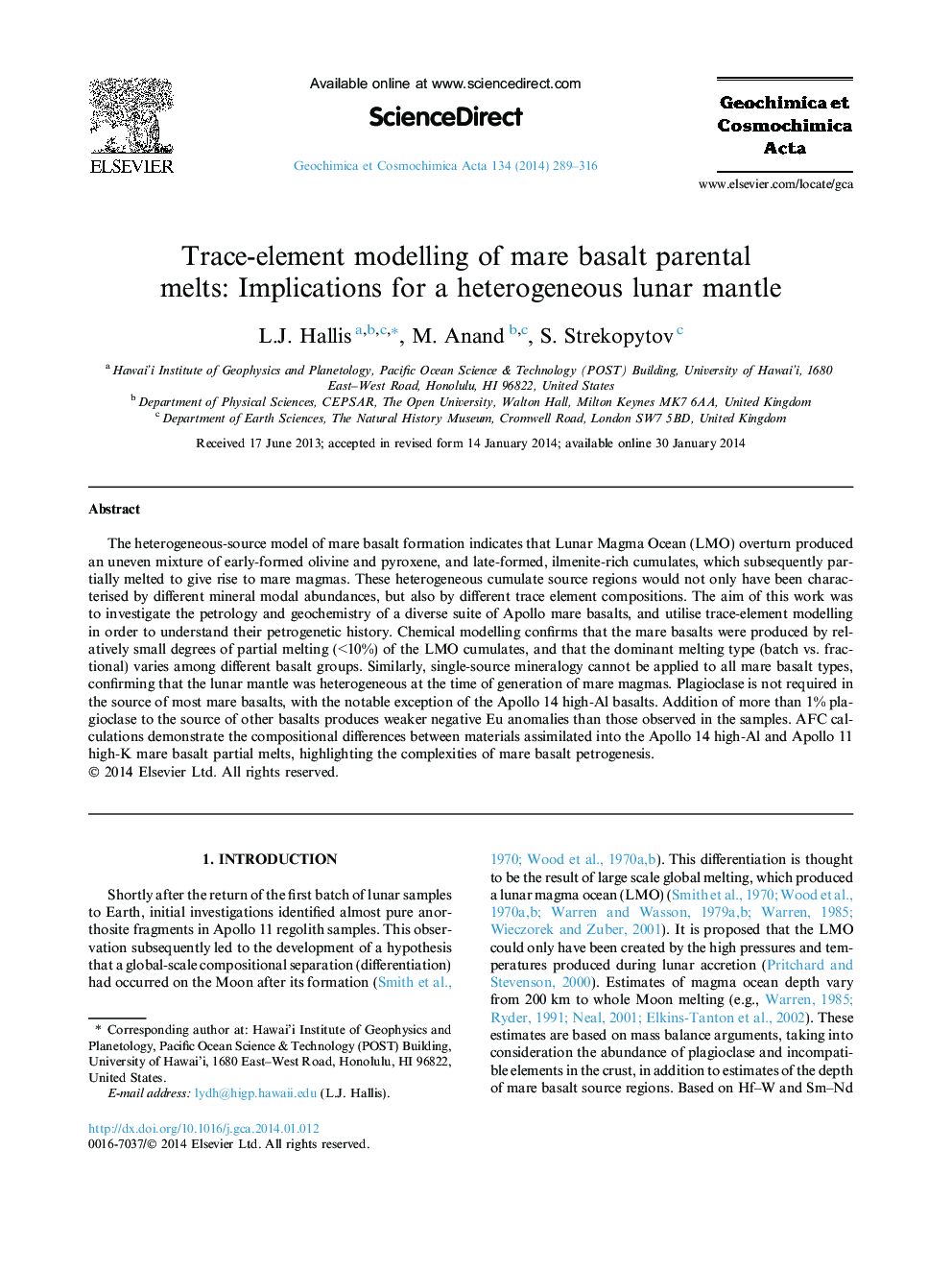| Article ID | Journal | Published Year | Pages | File Type |
|---|---|---|---|---|
| 4702111 | Geochimica et Cosmochimica Acta | 2014 | 28 Pages |
The heterogeneous-source model of mare basalt formation indicates that Lunar Magma Ocean (LMO) overturn produced an uneven mixture of early-formed olivine and pyroxene, and late-formed, ilmenite-rich cumulates, which subsequently partially melted to give rise to mare magmas. These heterogeneous cumulate source regions would not only have been characterised by different mineral modal abundances, but also by different trace element compositions. The aim of this work was to investigate the petrology and geochemistry of a diverse suite of Apollo mare basalts, and utilise trace-element modelling in order to understand their petrogenetic history. Chemical modelling confirms that the mare basalts were produced by relatively small degrees of partial melting (<10%) of the LMO cumulates, and that the dominant melting type (batch vs. fractional) varies among different basalt groups. Similarly, single-source mineralogy cannot be applied to all mare basalt types, confirming that the lunar mantle was heterogeneous at the time of generation of mare magmas. Plagioclase is not required in the source of most mare basalts, with the notable exception of the Apollo 14 high-Al basalts. Addition of more than 1% plagioclase to the source of other basalts produces weaker negative Eu anomalies than those observed in the samples. AFC calculations demonstrate the compositional differences between materials assimilated into the Apollo 14 high-Al and Apollo 11 high-K mare basalt partial melts, highlighting the complexities of mare basalt petrogenesis.
